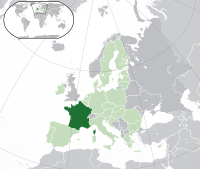
Photo from wikipedia
The main aim of the paper is to discuss the scale and nature of the practice of transmitting Holy Mass by parishes of the Roman Catholic Church in Poland through… Click to show full abstract
The main aim of the paper is to discuss the scale and nature of the practice of transmitting Holy Mass by parishes of the Roman Catholic Church in Poland through online live-streaming in spring 2020. The authors analyse these issues in a multifaceted and interdisciplinary way, mainly within the framework of communication and media studies and theology. The methodology of the paper combines practical theology (its four stages: “see-judge-act-review”), scientific methods applicable to social studies (especially social communication and media studies and sociological studies), and the technical aspect of communication activities (in the form of live video streaming) performed by parishes on the Internet. As it turns out, 40.8% of Polish parishes carried out online Mass broadcasts. In most cases, the main sources of broadcast signal were YouTube (18.9%) and Facebook (18.7%), while less than 5% of the parishes conducted technically independent broadcasts. The research showed a statistically significant correlation between online Mass broadcasting and the region of Poland. There was a statistically significant difference between the parish size and Mass broadcasting—the larger the parish, the more often such activities were performed; a similar correlation was observed between urban and rural parishes. Research has shown that in the dioceses where bishops directly encouraged parish priests to broadcast from their parishes, the average percentage of broadcasts was higher (46%) than in those in which there were no such incentives (38%). There was a statistically significant relationship between having a website and conducting online Mass broadcasting. Similarly, there was a statistically significant relationship between the type of parish (conventual–diocesan) and online Mass broadcasting. Conventual parishes did this much more often than diocesan ones (68.6% and 38.9% respectively).
Journal Title: Religion
Year Published: 2021
Link to full text (if available)
Share on Social Media: Sign Up to like & get
recommendations!